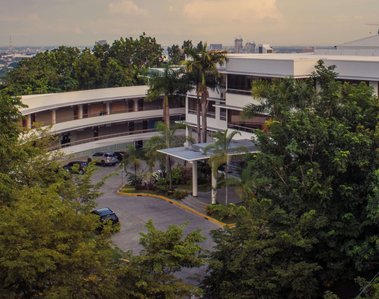Why not learn and earn in school? 🎋
2-min video proposal
Here is a quick summary of what Gro-Up is aiming to solve! Narrated by Loie.
What's the challenge?
Above 10% of children raised in rural areas of Ibagué, Colombia are forced to drop out of school to enter the workforce. 😦
Imagine being 14 and not having the option to go to school anymore, instead you're working 9-5.
Source: SOS Children's Village Ibagué
💡3 Striking stats in Colombia
How are their current experiences?
💬 According to local stakeholders.
Here are the top 3 concerns.
At home, students do not have internet access in the rural area.
Even if they do, connectivity is poor due to the mountainous geological landscape and it's not sufficient for online learning right now. This barrier to education amplified during Covid.
- Olivia (First-gen graduate, local STEM advocate)
Students feel discouraged due to limited prospective job opportunities.
Lots of students look up to their relatives and adult figures in their lives. They noticed that even after education, their families still struggle with employment and making a livable wage.
- Lenard (Professor in Social Studies with 10+ teaching / management and research experience)
Lots of kids come from low-income families, how do schools meet them where they're at?
Public schools still require learning material expenses while private schools are simply not affordable for the average household.
- Lisa (Current university student, running a project focused on accessibility to education)
① Rediscovering Stage
Alarming reports and statistics in Latin America 📉
23% of student dropouts according to the latest SITEAL (Latin American Educational Tendencies Information System) report.
The high dropout rates are primarily due to the disproportionate economic pressures weighing heavy on the conscience of students from lower income families. Many youth do not see a choice but to leave school in order to begin working to support their families around the age of 14-15. The “opportunity cost” of continuing their education is simply not worth it.
In addition, the report highlights 40% of students drop out because they do not believe what they are learning is useful.
Specifically in Tolima 📍
55.2% net coverage
in secondary education compared to 91.7% in primary coverage.
That is approximately a 40% decline.
50s average test scores
in Math, Science and Language consistently from primary to secondary education.
Honest reviews 💬
from locals left on different secondary schools on Google Map
Why does this matter?
The serious consequence
When underprivileged teens drop out of school instead of receiving the quality education that they need, this comes with a lifelong negative impact.
Without completing the basic level of education, it directly restricts their career opportunities, trajectories and salary compensations. Ultimately threatening their financial security for a lifetime– debilitating them from growing out of poverty.
Fundamentally, this is creating a lasting problem in the economical infrastructure of Ibagué.
② Redefining Stage
Let's refocus on how students from low-income families can afford to complete public secondary education.
When affordability is the constant challenge for receiving education, the option to enroll in school for teens living in poverty remains unjust. As a consequence, this specific group of students either do poorly in school or leave to directly aid their families' financial needs.
We need to be mindful of proposing a solution that prioritizes dealing with their immediate financial needs while providing the education that's highly applicable to their local economic development.
Redefining how might we structure the existing educational model to address this large and specific group of students in need of financial assistance, holds the key to increasing the retention of students pursuing secondary education in Ibagué.
⛏ Let's dig into the local soils
What are their existing local resources?
How might we?
Provide secondary education to students age ranging from 13-15 with a duo-educational and business plan that helps pays for their school expenses while learning relevant skills in school applicable to their local job market?
As a success, we increase the completion rate of local secondary education in Ibagué. Ultimately, paving the fundamental path for local teens to break out of the cycle of poverty.
③ Case study for our solution
In 2016, Louie visited the actual site of the Comembo Elementary School in the Philippines to conduct an onsite case study analysis. Inspired by the benefits as well as the similar geographical climate, this was chosen to be the foundation of our proposed project to help us set our goals for helping secondary school students from low-income families to succeed graduating in Ibagué, Colombia.
What Louie learned is this typology increased the amount of students coming into school of Comembo by up to 24% because it promotes scholarship program and generates revenue to help out the family of the students. It also established its ground in terms of socio economic of the school while improving the education system by engaging the students in real life situation in entrepreneurship and livelihood program.
Imparting knowledge to students on how to integrate vertical farming within urban city for students get more excited in going to school and promoting a higher quality of education.
Notable advantages of vertical farming at this public school:
- Improved student engagement and well-being without demanding massive budget
- Generated financial support for students from below income families
- Built foundational knowledge for future entrepreneurs
- Learned new approach to food production, design and construction
- Increased human comfort level and general air quality
- Reduced local greenhouse emissions
- Created green private outdoor spaces at school
- Minimized crop loss from severe weather
- Year round crop production
- Less agriculture run-off
- Improved current state of communities
💭3 Reflections so far
Show your work-in-process!
It's okay to not have a solution yet, it's part of the process! This is a great time to ask for feedback before you're at the finish line.
Think local, not just digital.
It's easy to default to a software solution in this day and age, but not all communities have internet integrated into their daily lives. Be considerate of geographical and economic constraints.
Education and wealth are an iconic duo.
"If you give a man a fish, he will be hungry tomorrow. If you teach a man to fish, he will be richer forever."
Fred Nelson
You made it! Thank you. Coming up...
🏖 Rewind App ⤎Next Stop ⤏ ☀️ Beam App
Enjoy the growth beneath the surface. I'm rooting for you! 🌱

















